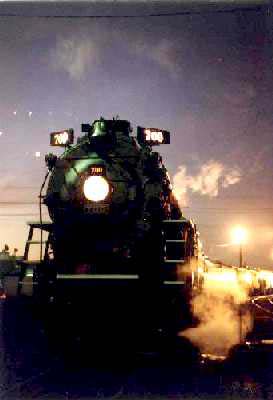• A circular cylinder is easy to manufacture, with relatively little welding. Of all cylinders of given volume, the cylinder of circular cross-section uses the least material. The inbuilt symmetry also ensures even heating of the boiler.
• A piston moves up and down inside its cylinder.
If any small rotation of the piston happens to occur, perhaps because of wear, the movement of the piston is not impeded.
• The formula for the area of a circle is
A =  d 2/4, where d denotes the diameter.
d 2/4, where d denotes the diameter.
Hence the required area is approximately
3.1416  56
56  56 / 4 = 2463 cm2.
56 / 4 = 2463 cm2.
• Your list might include the cross-sections of the boiler, chimney, pipes, piston cylinders. Also, the steam dome (top centre of the locomotive), pistons, lights, buffers, control wheels (in the cab).
